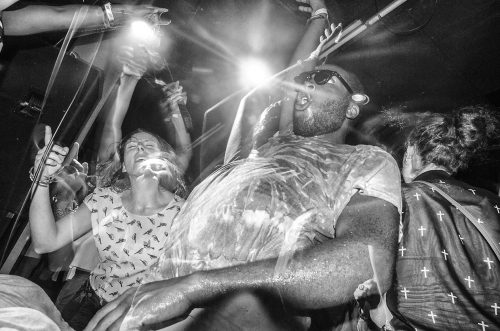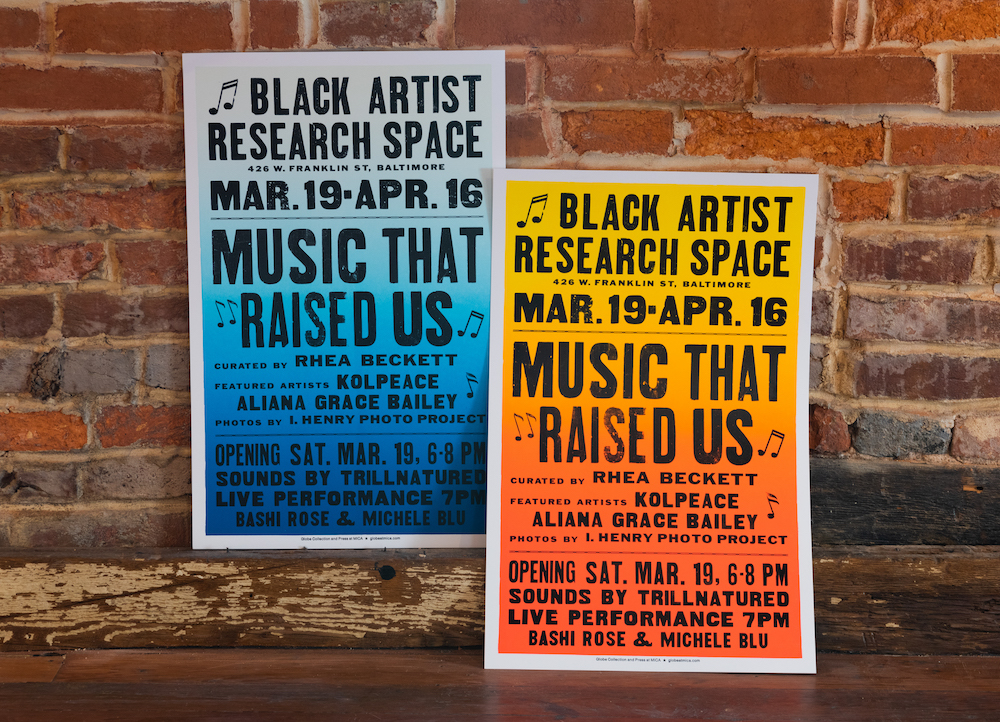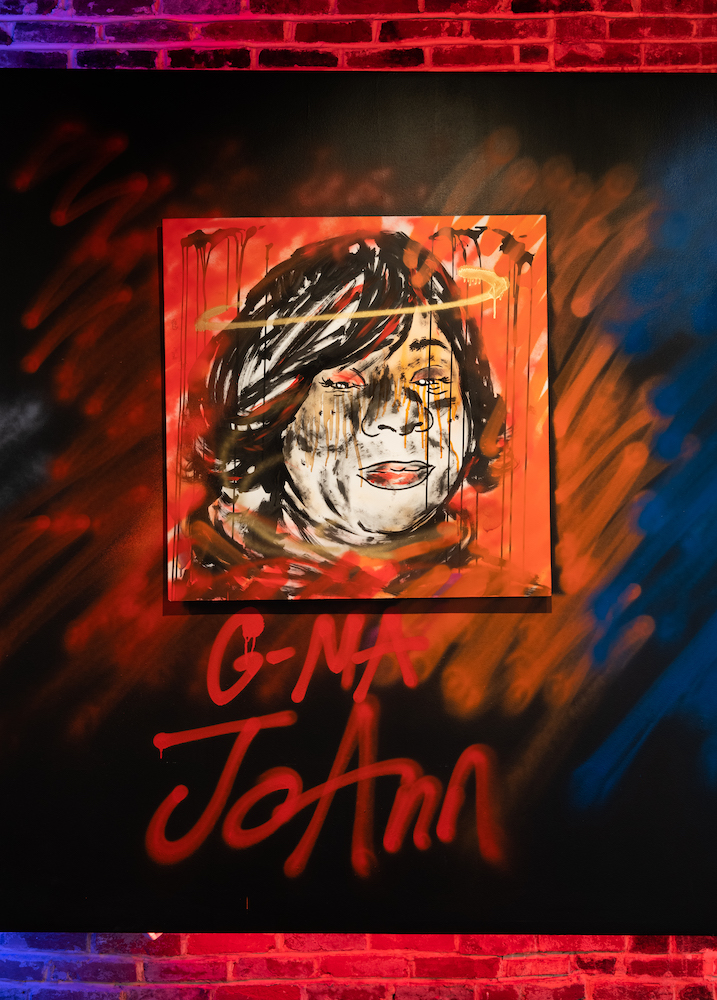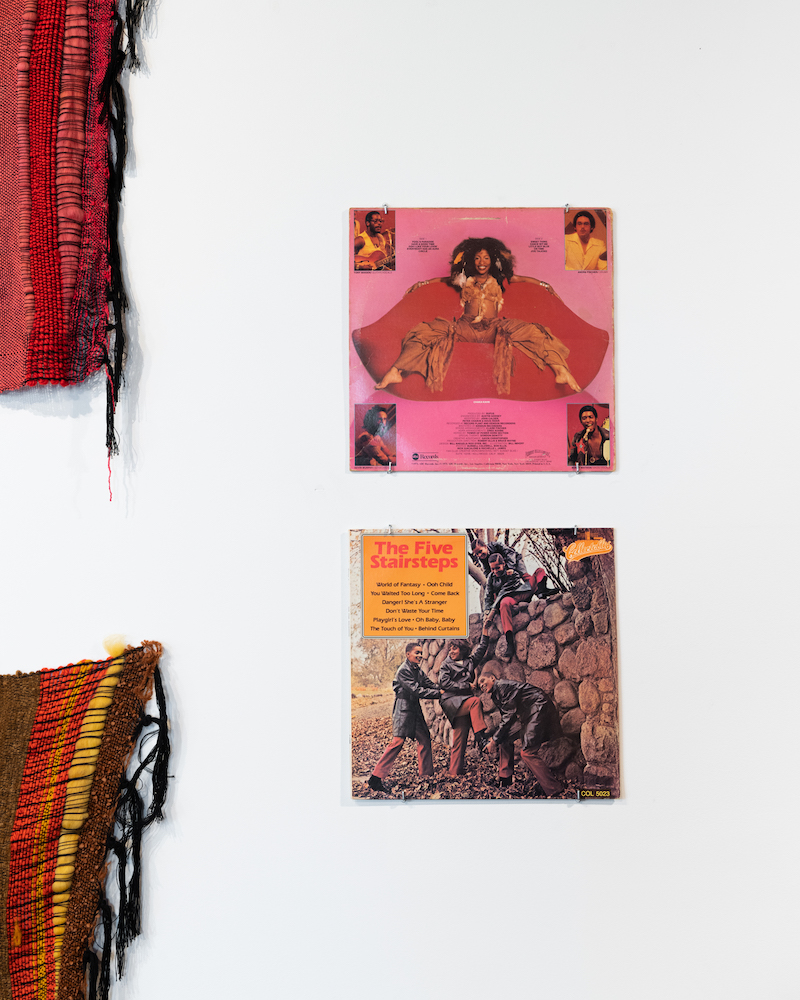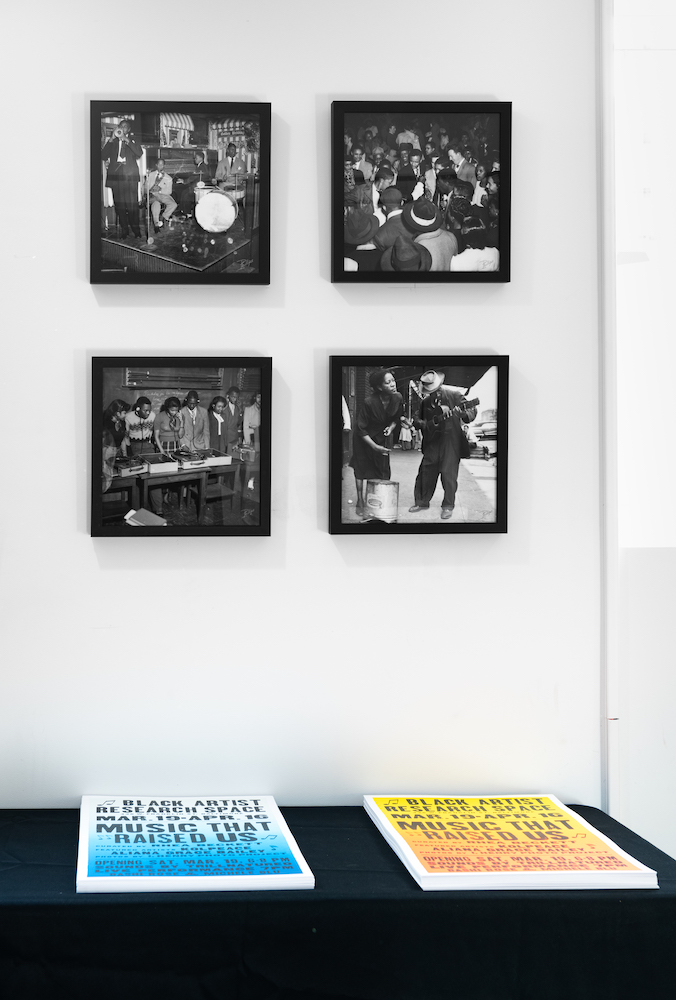Music has the ability to stir similar emotions in people from different backgrounds or in different locations. Two individuals who have never met can listen to the same song and generate the same sentiment. Black music has historically been a unifier: from church songs to soul, to jazz, funk, and trap, the music that raises us provides a soundtrack to our lives. It empowers us, colors our worlds, and is the driving force for the creation of artwork that will outlive us.
Music That Raised Us was an exhibition about Black music and its indelible impact on the featured artists who created new artworks for the show. For three months, Aliana Grace Bailey and Christopher “kolpeace” Johnson were artists in residence at Black Artist Research Space, or BARS, activating the downtown gallery with their conversations and creations. Music That Raised Us, which ran from March 19 through April 16 at 426 W. Franklin Street, was an amalgamation of the lived experiences of Bailey, kolpeace, and curator Rhea Beckett, but also of any artist who has been touched by the melody of a Stevie Wonder song or moved to move by the rhythm of a funk tune.
I first learned about the exhibition the same way that I learned about countless others: scrolling through my Instagram feed. I was stopped by a striking pairing in an installation by Aliana Grace Bailey: a Stevie Wonder record cover Music Of My Mind was affixed to a wall, next to a mass of vibrant, woven fabric cascading down next to it. Fringed in black, a wave of purple, orange, yellow, and pink from Bailey’s weaving reverberated the tones and timing of Wonder’s recorded audio. Looking at this, I heard the chorus of Stevie Wonder’s “Keep on Running” coming out of my iPhone, and it compelled me to make the journey to see the work. I felt that same stirring in the gallery.
